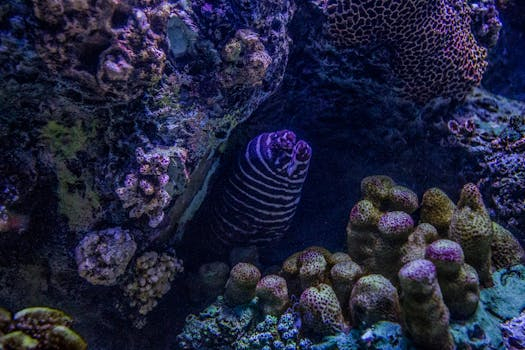Underwater Photography Gear: Capture Coral Reefs Like a Pro
Have you ever looked at stunning photos of coral reefs and wished you could capture those same vibrant and captivating images? Well, with the right underwater photography gear, you can! Whether you are a professional photographer or a novice looking to improve your skills, having the right gear is essential for achieving those picture-perfect shots. In this article, we will guide you through the must-have equipment for capturing coral reefs like a pro. So get your wetsuit on, grab your camera, and let’s dive into the world of underwater photography gear.
Camera and Housing
The most crucial piece of gear for underwater photography is, of course, the camera. When it comes to taking high-quality images of coral reefs, you need a camera that can handle the unique challenges of underwater photography. It is recommended to invest in a camera with manual control settings and interchangeable lenses, as they offer more versatility for capturing different types of shots. Some popular options among professional underwater photographers include the Nikon D850, Canon 5D Mark IV, and Sony A7R IV.
But having a great camera is not enough; you also need a housing unit to protect it from water. A housing unit is a waterproof case specially designed to fit your camera and allow you to access all the controls and buttons. It is essential to invest in a high-quality housing unit that can withstand the water pressure and keep your camera safe. Look for housings made of durable materials, such as aluminum or polycarbonate, and ensure they are rated for the depth you plan to dive to.
Lenses
The right lens can make all the difference in your underwater photos. When it comes to capturing coral reefs, a wide-angle lens is a must-have. A wide-angle lens allows you to capture a broader view of the reef, making your photos more immersive and vibrant. Generally, a lens with a focal length of 24mm to 35mm is recommended, as it allows you to get close enough to your subject without getting too distorted images. Some popular options to consider are the Canon EF 16-35mm f/2.8L II USM or the Nikon AF-S NIKKOR 16-35mm f/4G ED VR.
In addition to a wide-angle lens, you may also want to consider investing in a macro lens for those up-close shots of small creatures and details of the reef. Macro lenses have a high magnification ratio, allowing you to capture intricate details and produce stunning images. Popular choices include the Canon EF 100mm f/2.8L Macro IS USM or the Nikon AF-S VR Micro-NIKKOR 105mm f/2.8G IF-ED.
Strobes and Lights
As you dive deeper, the light starts to fade, and the colors become less vibrant. To bring back the vibrant colors and illuminate your subject, you need to invest in strobes or lights. Strobes are flash units that can be attached to your camera housing, while lights can be mounted on a tray and arm system. Both options have their advantages, so it is best to experiment and see which one works better for you.
When choosing strobes or lights, pay attention to their power output and beam angle, as it can affect the quality of your images. You can also consider investing in a snoot, which allows you to control the direction and spread of the light, giving you more creative control over your shots.
Filters
As you descend deeper into the water, you may notice that the colors start to become dull and blue-green. This is because water absorbs red and orange light, making your photos appear washed out. To correct this color loss, you can use color filters on your camera lens. Filters come in different colors and strengths, and their purpose is to bring back the vibrant colors that are lost underwater. Some popular filters among underwater photographers are red filters, magenta filters, and yellow filters.
Final Thoughts
Capturing coral reefs like a pro requires the right gear and a bit of practice. Remember to always do your research and invest in high-quality gear that will last and perform well. Don’t be afraid to experiment and try new techniques to capture unique images. And most importantly, respect the ocean and its inhabitants while taking photos. Now that you know the essential gear for underwater photography, it’s time to grab your gear and explore the wonders of the underwater world. Happy clicking!











